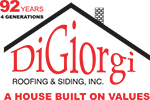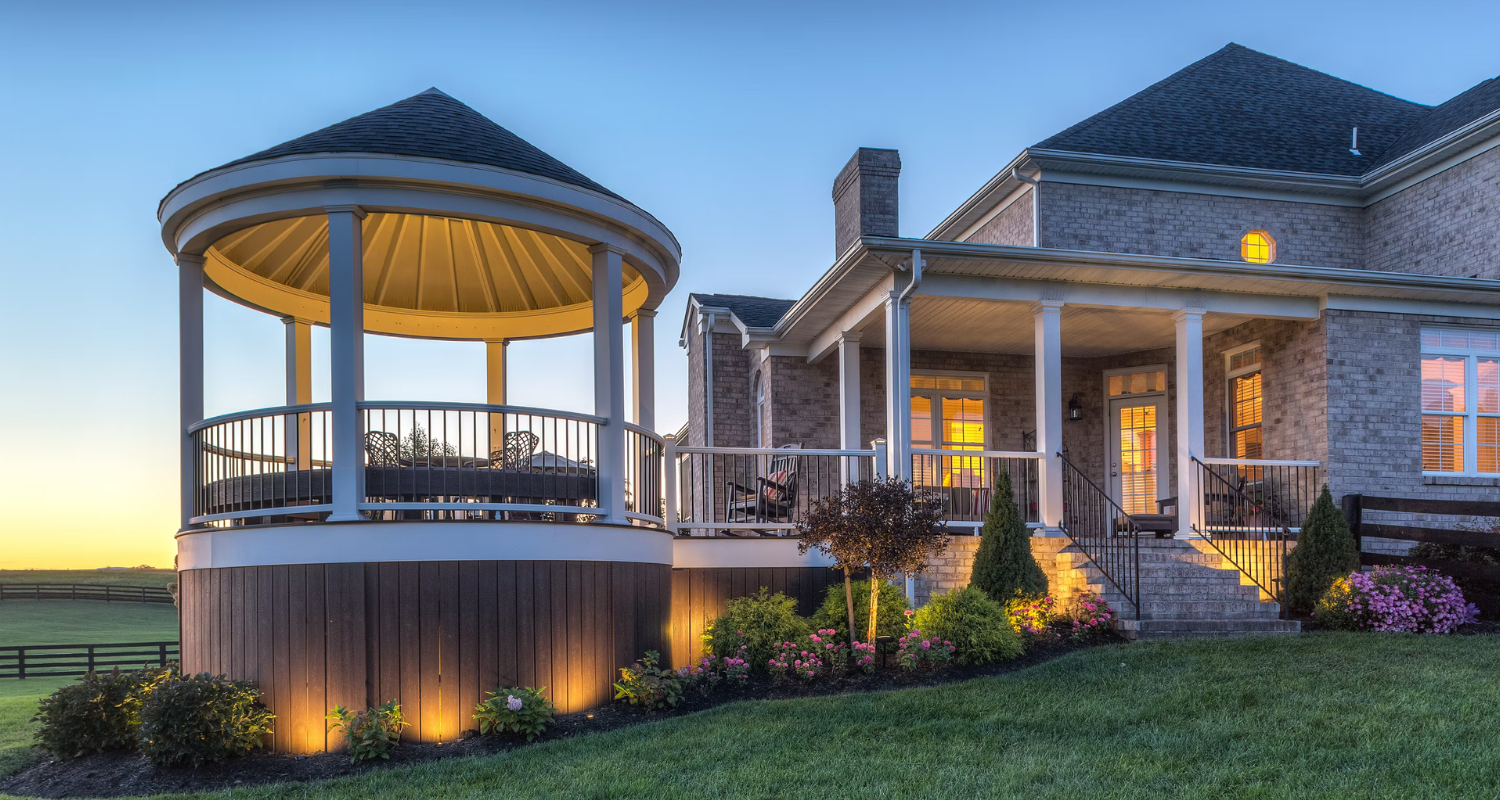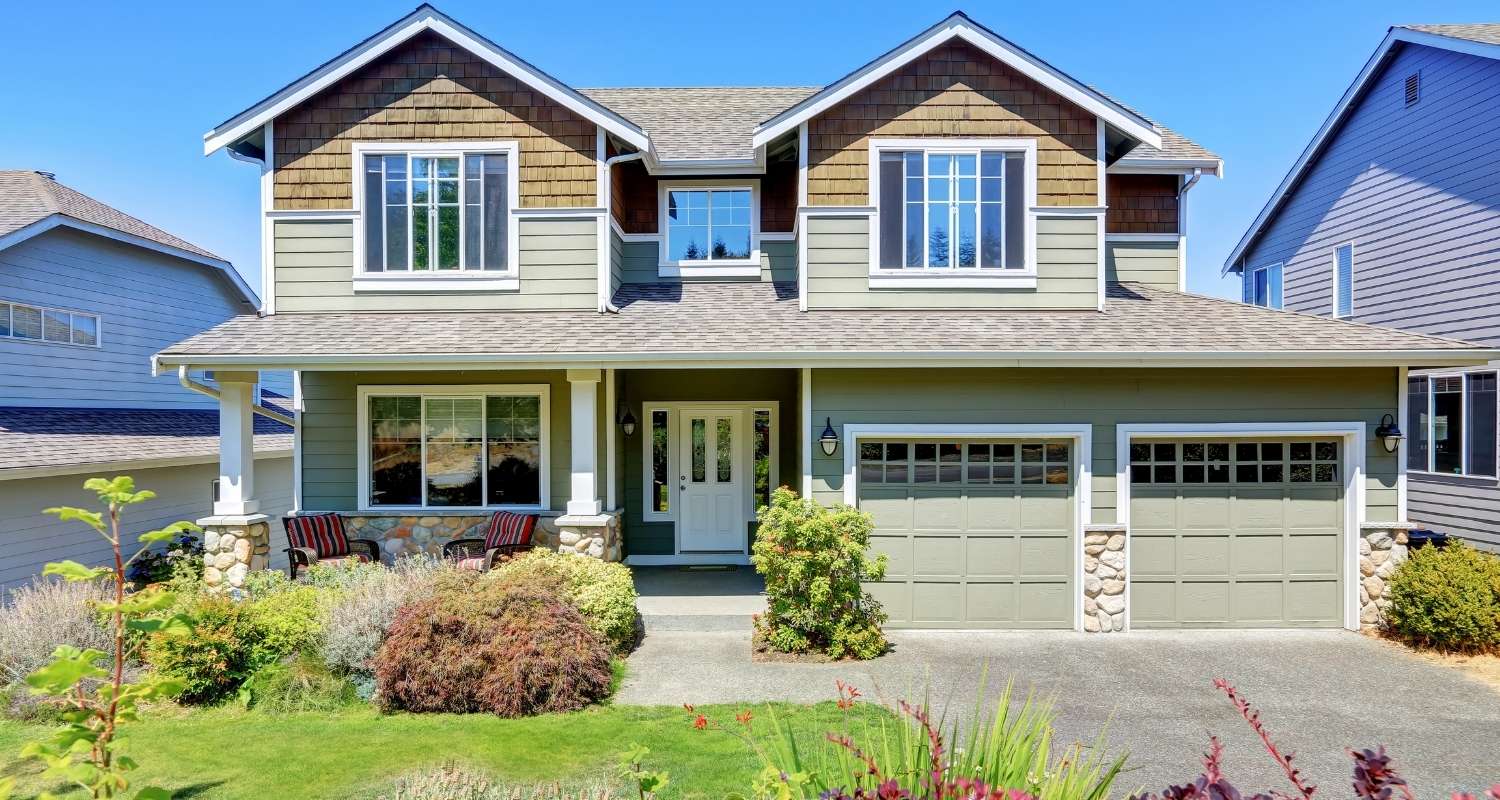Roof maintenance is a critical aspect of homeownership, essential for protecting your investment and ensuring the structural integrity of your home. Regular maintenance shields your roof from the harsh elements, preventing water damage and other related issues that can compromise the entire structure. By engaging in proactive maintenance, homeowners can avoid costly repairs, extend the lifespan of their roofs, and maintain the aesthetic appeal of their residences.
Our goal at DiGiorgi Roofing & Siding is to help you extend the lifespan of your roof, prevent costly repairs, and preserve the value of your home. Proper maintenance safeguards your property’s value and contributes to its curb appeal, ensuring that your home looks great year-round. Now, we will share essential tips and strategies to help you maintain your roof effectively.
Essential Roof Maintenance Tips
1. Clean Gutters Regularly
 Keeping your gutters clean is vital to prevent water buildup, which can lead to roof damage if not addressed. Clogged gutters can cause water to overflow and accumulate around your home’s foundation, potentially leading to structural issues.
Keeping your gutters clean is vital to prevent water buildup, which can lead to roof damage if not addressed. Clogged gutters can cause water to overflow and accumulate around your home’s foundation, potentially leading to structural issues.
It’s recommended to clean your gutters at least twice a year—once in the spring and once in the fall. This frequency should be adjusted based on the foliage surrounding your property, as homes with many trees may require more frequent cleaning.
Installing gutter guards can significantly reduce the amount of debris accumulating in your gutters. These guards keep leaves and larger objects out while allowing water to drain properly, minimizing the need for frequent cleanings.
2. Trim Overhanging Branches
Branches that rub against your roof can cause significant damage to asphalt shingles, especially during high winds. This friction can remove protective granules from the shingles, exposing the underlying material to the elements.
Maintain a clearance of at least 10 feet between roof edges and branches. This distance prevents branches from contacting the roof and reduces the risk of animals accessing the roof. Regular pruning, at least once a year or as needed, ensures that branches do not pose a risk to your roof.
3. Inspect and Repair Flashing
 Flashing is a material used to seal roof joints and edges where the roof meets other surfaces, such as around chimneys and at skylights. It is crucial to prevent water from seeping into these vulnerable areas.
Flashing is a material used to seal roof joints and edges where the roof meets other surfaces, such as around chimneys and at skylights. It is crucial to prevent water from seeping into these vulnerable areas.
Inspect flashing annually for any signs of cracking, rusting, or lifting. Any damage found should be addressed promptly to maintain the integrity of the seal. Common repair methods include re-caulking or replacing damaged flashing sections, ensuring no water can enter the home.
4. Remove Moss and Algae
Moss and algae retention on your roof can trap moisture against the roof surface, leading to shingle deterioration and potential leaks. These organisms can also undermine your home’s aesthetic and significantly shorten your roof’s lifespan.
For safe removal, gentle cleaning solutions specifically designed for roofs can be used, or professional cleaning services can be employed. It is important to avoid harsh scraping or power washing techniques that could damage shingles. Ensure the roof is well-ventilated and gets plenty of sunlight to avoid moss and algae growth.
5. Check for Leaks
 Identifying signs of roof leaks early can save you significant repair costs and structural headaches. Look for water stains on ceilings, mold growth, or dampness in the attic as these are common indicators of leaks. Early detection is key to preventing minor issues from becoming major ones.
Identifying signs of roof leaks early can save you significant repair costs and structural headaches. Look for water stains on ceilings, mold growth, or dampness in the attic as these are common indicators of leaks. Early detection is key to preventing minor issues from becoming major ones.
If you notice signs of a leak, immediate action is necessary to prevent further damage to your home’s interior and structural components. DIY methods such as applying roofing tar under shingles may provide temporary relief, but it’s crucial to engage a professional roofing contractor for a permanent solution.
6. Remove Debris
Debris like leaves, twigs, and other materials can accumulate on your roof and lead to water pooling and shingle damage. This accumulation can obstruct water flow and lead to leaks or structural damage over time.
Safe removal techniques include using a leaf blower or a soft-bristle broom to gently clear debris without damaging the roof surface. It is important to perform this cleaning as needed, especially after storms or in high-wind areas, to prevent buildup and potential damage.
How Often Should You Have Your Roof Inspected?
- Age of Roof: Older roofs require more frequent inspections as they are more susceptible to wear and damage. It’s smart to conduct an inspection at least annually if your roof is past its warranty period.
- Climate Conditions: Living in areas with harsh weather conditions such as heavy snow, strong winds, or extreme temperatures necessitates more frequent roof inspections to catch potential damages early.
- Previous Issues: If your roof has had issues in the past, it’s important to have more frequent inspections to monitor the areas of concern and prevent recurrent problems.
- Post-Storm Checks: After any significant storm or natural disaster, inspecting your roof for damage is crucial. This helps to assess any immediate repairs needed to maintain the roof’s integrity.
- Regular Maintenance: Generally, having your roof inspected at least once a year is recommended to ensure it remains in good condition and any minor repairs are addressed promptly.
Signs That Your Roof Needs Attention
Water stains on ceiling or walls
Water stains are often the first sign of a roof leak. These marks can appear yellow or brown and typically signify moisture seeping through the roof material. Ignoring these signs can lead to more extensive damage over time, including mold growth and structural weakening.
Addressing the underlying issue promptly can save significant costs and hassle associated with major roof repairs or replacements and prevent further damage.
Missing or damaged shingles
 Missing or damaged shingles expose your roof to water infiltration, leading to leaks and other structural issues. This damage can occur from severe weather conditions, age, or physical impact.
Missing or damaged shingles expose your roof to water infiltration, leading to leaks and other structural issues. This damage can occur from severe weather conditions, age, or physical impact.
Identifying and replacing damaged shingles quickly prevents further damage to the underlayment and structural components of the roof. Regular inspections help spot these issues before they escalate into more serious problems.
Sagging areas
Sagging areas on a roof are a potential sign of structural damage or inadequate support. These can result from prolonged exposure to moisture, faulty installation, or structural failure. Sagging not only compromises the roof’s integrity but can also be a safety hazard. Addressing these issues promptly with a professional inspection ensures the long-term durability and safety of the roof.
Excessive granule loss in gutters
Granule loss is a common indicator of shingle deterioration. Granules protect the shingle from UV rays and weather elements, and their loss can accelerate the aging of the roof. Noticing excessive granules in the gutters often means that the shingles are nearing the end of their life.
Rely on a professional roofer to determine the cause of granule loss quickly. Early detection and action can extend the life of the roof and prevent more severe issues. Your local expert can tell you if your roof requires repair or replacement.
Immediate action
 Immediate action is required when signs of roof damage are observed. Delaying repairs can lead to more extensive damage, including leaks, mold growth, and structural compromise. Quick response helps maintain the roof’s condition and prevents costly repairs.
Immediate action is required when signs of roof damage are observed. Delaying repairs can lead to more extensive damage, including leaks, mold growth, and structural compromise. Quick response helps maintain the roof’s condition and prevents costly repairs.
Neglecting signs of roof damage can lead to increased repair costs and may compromise your home’s structural integrity. This neglect could create several key dangers.
The Dangers of Neglecting Roof Maintenance
- Minor to Major Issues: Small, unaddressed repairs can quickly escalate into major problems that require extensive and expensive intervention. Regular maintenance helps catch these issues early.
- Leaks and Water Damage: Ignoring maintenance can lead to leaks, resulting in significant water damage to interiors and structural elements. This affects the building’s integrity and can lead to health issues from mold and mildew.
- Energy Loss: Poor roof condition can lead to inadequate insulation and ventilation, resulting in higher energy bills. Keeping the roof in good condition ensures efficient energy use and comfortable indoor temperatures.
- Voided Warranties: Failure to maintain the roof according to manufacturer guidelines can void the warranty coverage, leaving you financially responsible for repairs that could have been covered.
- Decreased Lifespan: Without regular maintenance, a roof’s lifespan can be significantly reduced. This leads to roof replacements that are earlier than expected, which are costly and inconvenient.
DiGiorgi Is Here For Your Professional Roof Maintenance Services
DiGiorgi Roofing & Siding offers expert services in roof maintenance, ensuring thorough inspections and high-quality repairs. Our specialized equipment and experienced technicians are adept at identifying potential issues before they become major problems.
Our team is trained to spot hidden damages and provide effective solutions, ensuring your roof remains in optimal condition. By choosing DiGiorgi, you receive professional service that upholds the highest quality and durability standards.
Enjoy peace of mind with our comprehensive warranty coverage for workmanship and materials. Rely on our efficient and safe maintenance services to save time and avoid the risks associated with DIY roof repairs, including a minor roof repair.
For a free in-home consultation and to receive a free quote, contact us today. Let us help you keep your roof in prime condition, protecting your home and enhancing its value.





